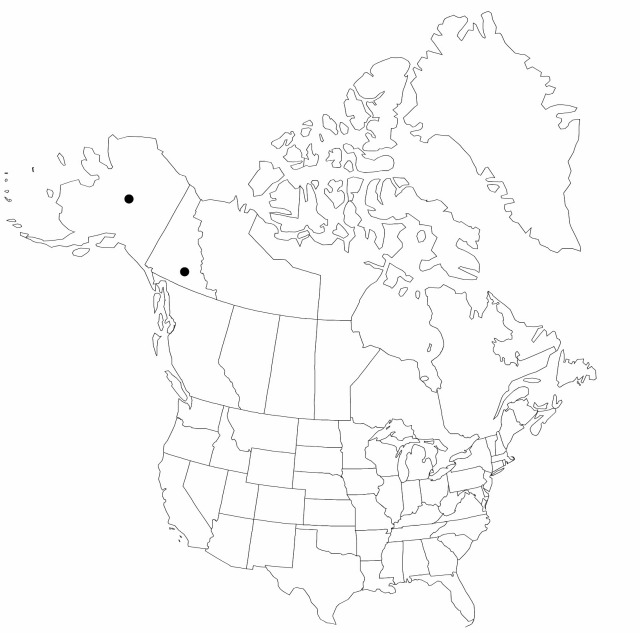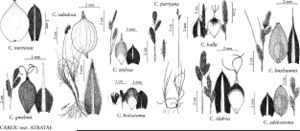Carex sabulosa
Enum. Pl. 2: 432. 1837.
Plants cespitose, long-creeping rhizomatous. Culms 25–35 cm, smooth. Leaves 2–3 mm wide, often circinate. Inflorescences: proximal bracts shorter than or exceeding inflorescences; spikes globose or elongate, 6–17 × 6–10 mm; proximal spikes sometimes erect, separate, short-pedunculate; distal spikes contiguous, overlapping, or erect, sessile or short-pendunculate, forming dense terminal cluster; lateral 1–2(–4) spikes pistillate; terminal spike gynecandrous. Pistillate scales light to dark brown or chestnut, distal margins broadly hyaline, lanceolate, equaling or, more commonly, exceeding and narrower than perigynia, midvein lighter colored than body, conspicuous, often raised, prominent, apex acute or mucronate. Perigynia ascending, light brown, strongly veined, broadly elliptic, 4–5 × 2–3 mm, apex abruptly beaked, smooth or distally papillose; beak 0.6–0.8 mm, deeply, sharply bidentate, smooth or papillose. Achenes nearly filling body of perigynia.
Phenology: Fruiting Jun–Aug.
Habitat: Riverine sand exposures, dune fields
Elevation: 600–800 m
Distribution

Yukon, Alaska, Asia (Kazakhstan, Mongolia, Russia).
Discussion
Carex sabulosa was first recognized in North America as C. leiophylla Mackenzie. M. Raymond (1965) reported their similarity and considered C. sabulosa and C. leiophylla synonymous. A. E. Porsild (1966), on the other hand, saw distinctions, hence the combination C. sabulosa subsp. leiophylla. Our material falls well within the variation of C. sabulosa from Asia. The nearest extraterritorial locality is on the lower Lena River, Yakutia (Sakha).
Selected References
None.
